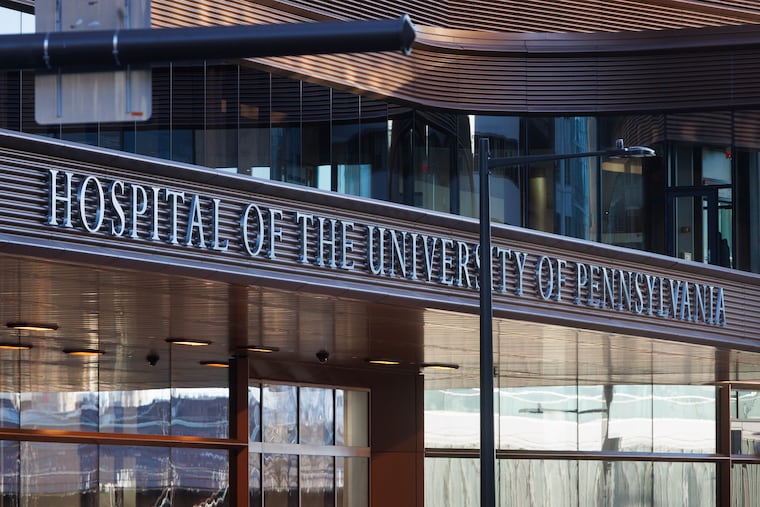Most of Penn’s Philly hospitals downgraded in Leapfrog’s fall safety ratings. Check to see how your local hospital ranked.
Penn Medicine is one of the few health systems in the Philly area that does not participate in Leapfrog's safety survey.

All of Penn Medicine’s Philadelphia-area hospitals received C grades in the latest report card from a leading hospital safety watchdog, after the group changed how it grades health systems to penalize facilities that don’t participate in its survey.
The C rating is a downgrade for three Penn-owned hospitals: the Hospital of the University of Pennsylvania, Penn Presbyterian Medical Center and Chester County Hospital, which previously received B or A ratings from Leapfrog, a hospital rating organization. Pennsylvania Hospital maintained the C rating it received in spring 2024 and fall 2023.
Penn Medicine also owns Lancaster General Hospital and Princeton Medical Center, which both received A grades.
Leapfrog releases safety ratings for some 3,000 hospitals nationally twice a year. The nonprofit grades hospitals on 22 safety metrics, such as infection rates and preventable errors, that are reported by the hospitals to the federal Centers for Medicare and Medicaid Services. Another seven safety indicators come from Leapfrog’s own survey that hospitals voluntarily complete. Fall ratings include data from 2022 to 2024.
The vast majority of hospitals — about 80% nationally — participate in Leapfrog’s survey. Penn Medicine and Crozer Health, which includes Crozer-Chester Medical Center and Taylor Hospital, are the only local health systems that do not participate. Crozer’s hospitals, owned by the for-profit Prospect Medical Holdings Inc., have received D ratings for the past four grading cycles.
Previously, hospitals that didn’t provide their own data were assigned a score based on the average response from other hospitals in the area. Now, hospitals that do not respond to Leapfrog’s survey are assigned the lowest rating for those categories.
“We were estimating how hospitals were performing, but what we found was this was not representative of what was going on at those hospitals,” said Alexandra Russo, lead analyst for Leapfrog’s safety grade program.
Penn defended its commitment to safety and quality, even as it rejects long-standing private sector ratings it says are time consuming to maintain and don’t necessarily lead to better care. The health system stopped submitting data to another leading hospital-ranking system by U.S. News & World Report in 2023 and has not participated in Leapfrog’s survey in years.
“Like all ratings and rankings programs — each of which have different methodologies and provide selected snapshots of performance — Leapfrog’s methodology is subject to changes in any given year,” said PJ Brennan, Penn Medicine’s chief medical officer. “This variability is among reasons why it is difficult to rely on any singular program to assess a hospital or health system’s quality.”
Leapfrog rated 41 hospital facilities in Philadelphia, the city’s Pennsylvania suburbs and Southern New Jersey, with the following breakdown of grades:
41.5% (17 hospitals) received an A rating. Nationally about 32% of hospitals received an A.
17.1% (seven hospitals) received a B rating.
36.6% (15 hospitals) received a C rating.
Two hospitals received a D rating.
Rating hospital quality and safety
Critics have questioned the value of such grading systems, because hospitals sometimes receive conflicting ratings. Some critics argue that the ratings organization doesn’t adequately account for hospitals that care for a greater portion of patients who have complex medical problems and may be at higher risk for complications.
Last year, Penn announced it would no longer report information to U.S. News & World Report for its hospital and medical school rankings. Kevin B. Mahoney, CEO of the University of Pennsylvania Health System, said at the time that chasing these rankings meant focusing on performance measures that mattered only because they were part of that organization’s methodology.
Brennan said the system declined to participate in the Leapfrog survey at three of its five hospitals for the same reasons. Penn’s Princeton and Lancaster hospitals complete the survey as a condition of insurance contracts, he said.
“We continue to prioritize the areas of performance which are part of the Leapfrog survey, but completion of the survey is a resource-intensive process, and at this time, we have elected to dedicate those efforts to our own external quality website and our ongoing work to ensure patients receive the very best care,” he said.
Leapfrog said it changed how it handles hospitals that don’t respond to its survey in an effort to offer more accurate, meaningful information.
“The hospitals that do complete the survey put in a tremendous amount of resources,” Russo said. “It wasn’t fair to let hospitals that weren’t transparent actually do better in some cases than those hospitals that were trying to be transparent.”
Leapfrog analyzed ratings from hospitals that previously didn’t participate in the survey and then began completing it. Analysts found that the artificial “average” ratings they had given those hospitals in the past, when they didn’t participate, were higher than the actual data they later reported in the survey, Russo said.
The average ratings that nonparticipating hospitals received under the old methodology did not represent how well the hospital performed on those metrics — but neither does bottoming out their score in those categories.
For instance, Leapfrog assigned Penn’s hospitals the lowest rating for hand hygiene not because they have evidence that Penn doctors are lax in washing their hands before surgery, but because the hospital refused to provide any data.
Pennsylvania Department of Health inspectors have visited Penn’s hospitals dozens of times over the past few years to investigate safety problems, but have not cited the hospitals for hand hygiene failures or botched medications.
» READ MORE: Nurses left patient to die at Penn Medicine hospital. State inspectors issued a severe warning.